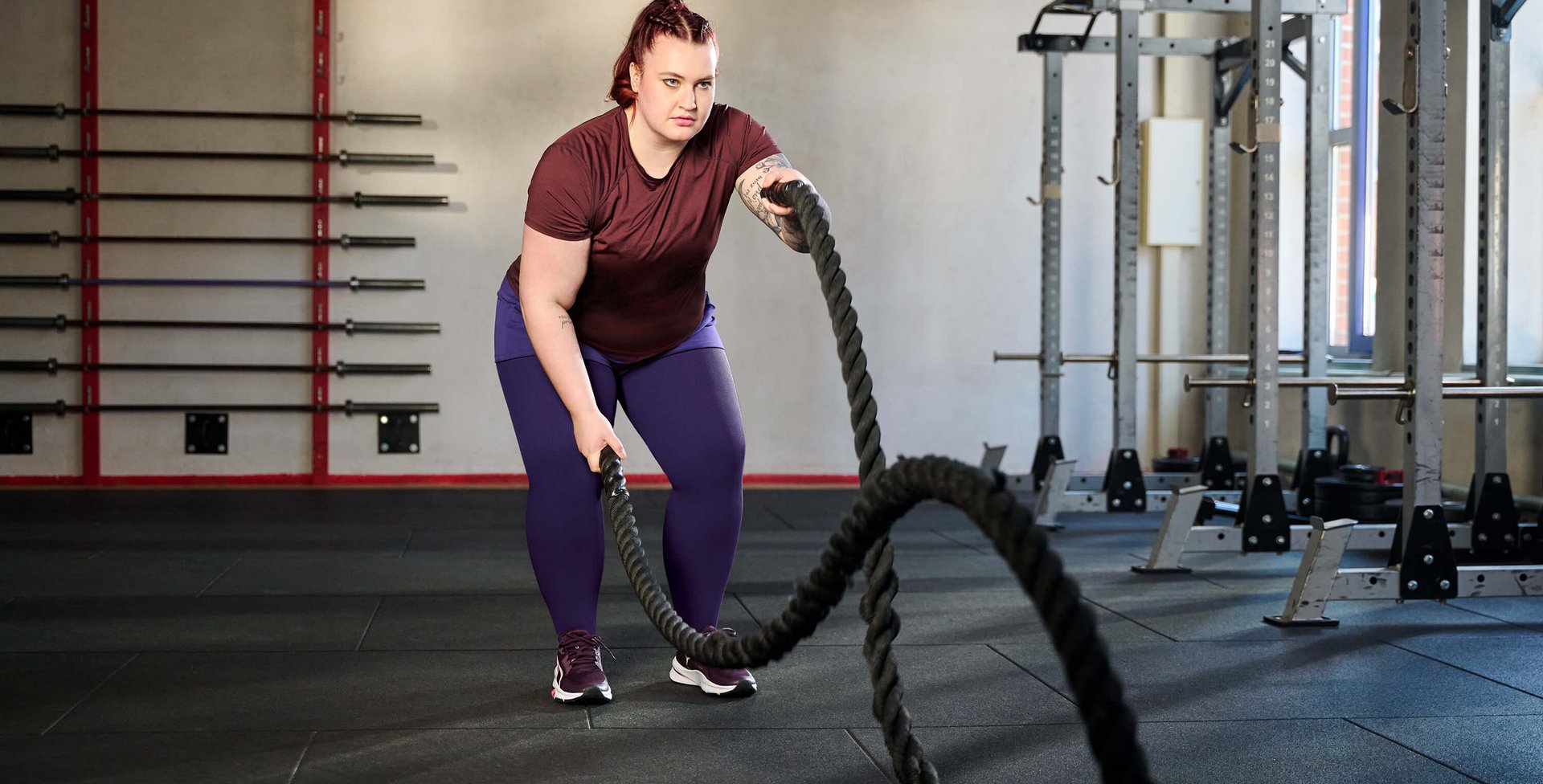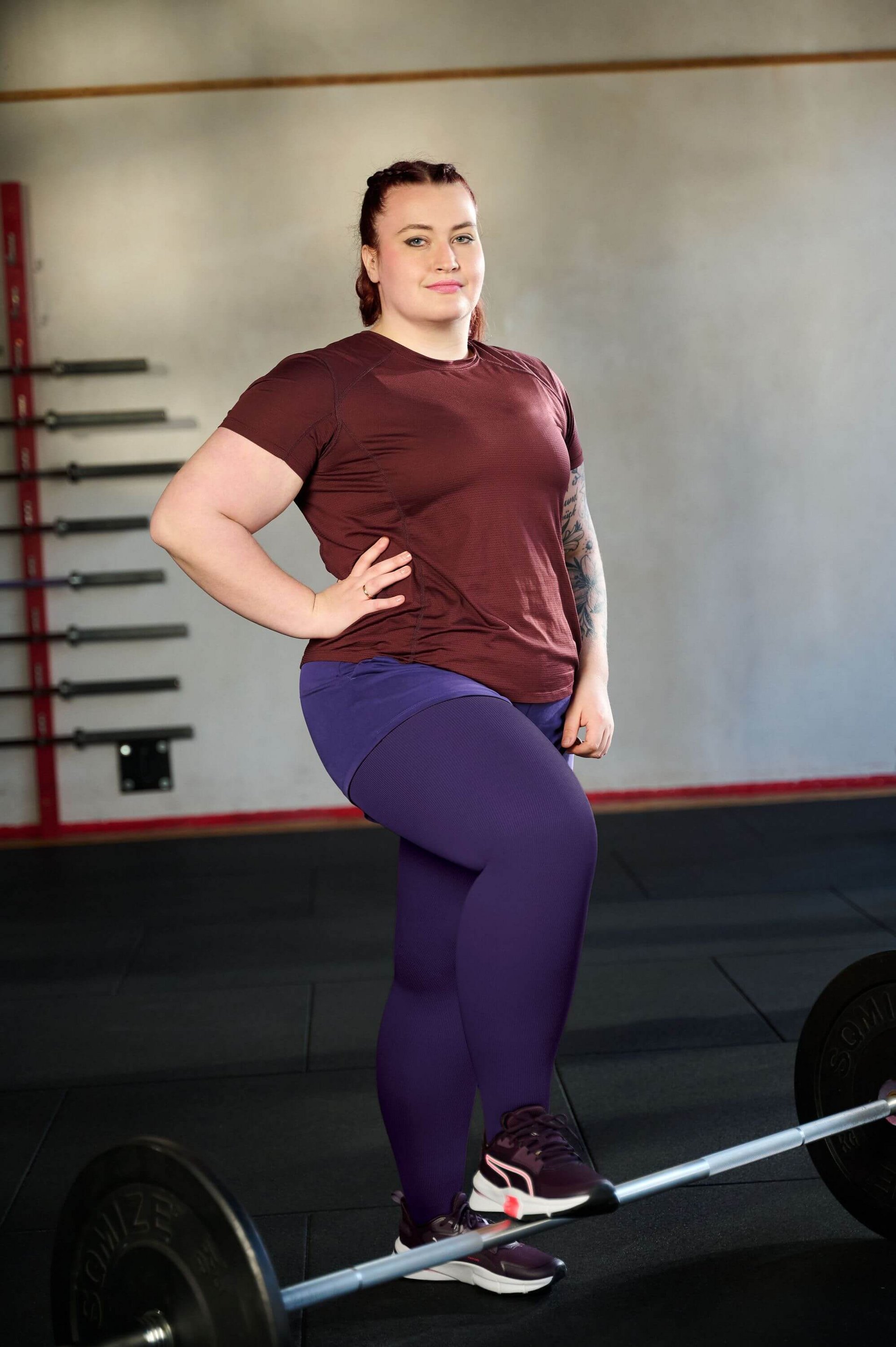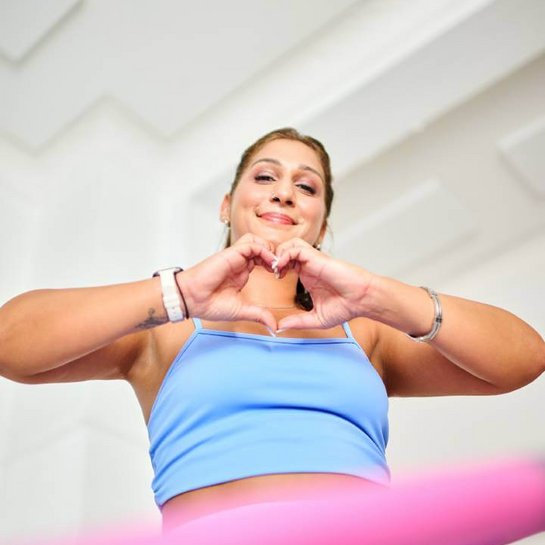
Lip- and Lymphedema
Let’s go: exercise for lymphedema
How movement, targeted exercises and compression can help with edema
An important component of complex decongestive therapy is movement. This has a reason: when you move, lymphatic fluid is drained more effectively, your mobility increases and your mood is lifted. Find out in this article which exercises and sports are suitable, and why compression is indispensable.
Lymphedema and exercise – not mutually exclusive!

Swollen legs, tension and pressure-sensitive skin: not the best conditions to start exercising. But exercise is one of the five pillars of complex decongestive therapy, which is known to be the most effective method of managing lymphedema. And not without reason: physiotherapy exercises and gentle activity such as yoga, walking, Nordic walking and aqua aerobics provide patients with more mobility and reduce swelling. The latter is thanks to what we call “muscle pump”. When muscles are tensed and then relaxed, pressure is exerted on the lymph vessels. The result: the accumulated lymph can drain much more easily. At the same time, regular exercise - in conjunction with a healthy, balanced diet - counteracts obesity, which can promote lymphedema.
Which exercise for lymphedema?
In general, sports that are gentle on your joints are suitable in cases of lymphedema. This includes swimming and other activities in water, such as aqua jogging or aqua cycling. Exercise in water has another practical side effect: the water pressure ensures that lymph can drain from the tissue. Yoga, walking and cycling are alternatives on dry land. (If you’re not sure which type of activity or sport is suitable for you, discuss it with your physician and find out what to bear in mind.)
We’d like to inspire you and highlight the benefits of the following sports.
As you may know, special sticks are used in Nordic walking. They don’t just provide support and actively involve your arms in the movement – they also offer noticeable relief for your ankles, knees, and spine. Walking is particularly pleasant on tartan tracks or forest floors.
The moderate demand made on the arms and legs will exercise a lot of muscle groups which significantly increases the energy used compared with ordinary walking or hiking, and will burn a lot of calories. When you also wear your compression product, you’re stimulating lymph flow. In many ways, this makes Nordic walking an effective and attractive sport in the fresh air.
A cross trainer is a suitable fitness equipment for endurance training which is gentle on the joints and makes demands on many muscle groups. A great benefit are the smooth, controlled movements without impact, unlike during running for example. The targeted use of your arms even reduces the workload on your legs. But you still activate your calf muscle pump in a similar way to climbing stairs. In combination with your compression product, which you should always wear during training, you can really get your lymph flowing. And if you listen to your favorite music or watch an exciting program on your tablet, the session is over before you know it.
A trampoline workout is characterized by the constant switching between weightlessness and gentle pressure on the legs. The continuous bouncing on the trampoline is designed to help promote lymphatic drainage, which also enables the stimulation of deep lymph channels. You will also benefit from a full-body workout that addresses many muscle groups, thus burning a lot of calories. In addition, your workout is gentle on the joints and you can improve your endurance, balance, and coordination. Ultimately, another huge bonus is the fun factor, of course.
For one thing, swimming is excellent full-body training where the water makes you feel light and your body weight does not exert pressure on your joints. After a few minutes already, you will benefit from excellent cardiovascular training that burns a lot of calories, strengthens your muscles, and improves endurance. The hydrostatic pressure exerted by the water also increases lymphatic drainage when you’re moving in the water. (In a way, the water is a substitute for your compression product.) This results in your tissue being decongested, swelling reducing, and pain caused by tension being significantly alleviated.
Doubtless, it takes a bit of resolve going out there in a bikini or swimsuit – but the positive effects of swimming are totally worth it. Don’t miss out because you’re embarrassed. We can also recommend aqua fitness, aqua jogging, and aqua aerobics. So why not give them a try? (And perhaps your health insurance may even contribute to the costs. It’s certainly worth asking!)
If we were able to convince you of the benefits of aqua sports, you should consider the following tips before jumping in:
Yoga has a very positive effect on body, mind, and soul. It relaxes, strengthens your immune system, stimulates detoxification processes, promotes circulation, and lowers blood pressure. Plus, it increases your strength and coordination, improves mobility and strengthens your muscles.
And in cases of lymphedema, yoga has a very special effect: the characteristic yoga breathing patterns cause regular pressure changes in your body, which also affect your lymph vessels, of course. This can stimulate the removal of lymphatic fluid, similar to wearing compression garments. Furthermore, this training is also beneficial for your cardiovascular system and promotes your vitality.
The importance of decongestion exercises increases based on how pronounced your condition is because advanced lymphedema restricts performance and makes recovery phases harder. The flowing movements are therefore designed to stimulate and support ideal lymphatic drainage. This process has the goal of preventing lymphatic fluid from accumulating in the tissue and of transporting it toward the collecting vessels.
You can find numerous exercises in our curaflow-App. The exercises are ideal for beginners to get moving despite edema; those who have quite active everyday lives in general may wish to use the videos to supplement other sporting activities.

What I can do, you can achieve, too!”
Antonella Polisciano
Influencer and motivator
Compression stockings for lymphedema – your sporty companions
Our movement mentor Christina demonstrates: the be-all and end-all of lymphedema management is compression. Every single day and during exercise, too, of course. The VenoTrain curaflow, for example, is the appropriate stocking model for lymphedema. These flat-knit compression stockings alleviate painful tension, support lymphatic drainage, and are also breathable. High-quality, gentle materials turn compression stockings into your daily companions during self-management. They will help you live an active life again without pain.
